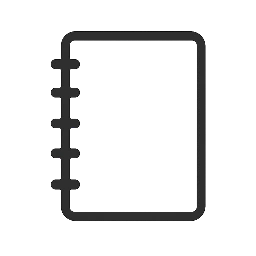Choosing the right laptop can be daunting when there are hundreds of models, specs and price ranges on the market. Whether you’re a student, a professional or a casual user, the ideal laptop should match your needs, lifestyle and budget.
In this guide, we’ll break down the key considerations so you can confidently pick the best device for work, school or entertainment. We’ll cover performance factors like processor and memory, portability options, battery life, and special features. We’ll also provide buying tips to help you save money and avoid common pitfalls.
1. Determine Your Use Case
Before looking at specifications, think about how you plan to use the laptop. Common use-case categories include:
- Office and productivity: Ideal for students, writers, and business professionals who need word processing, spreadsheets, and web browsing. Moderate performance requirements.
- Creative work: For photo editing, graphic design or video editing you’ll need a higher-end processor and graphics card.
- Gaming: Gaming laptops require powerful dedicated graphics cards, high-refresh-rate displays and efficient cooling.
- General use: For casual browsing, streaming and light tasks, a budget-friendly option will suffice.
Knowing your primary activities will guide your choices for processor, memory, and GPU.
2. Select the Right Processor
The processor (CPU) is the brain of your laptop and determines how quickly it can handle tasks. Mainstream processors include Intel’s Core series (i3, i5, i7, i9) and AMD’s Ryzen series. As a rule:
- Intel Core i3 / AMD Ryzen 3: Suitable for basic tasks like browsing and word processing. Usually found in budget laptops.
- Intel Core i5 / AMD Ryzen 5: Balanced performance for everyday productivity, streaming, and some light creative work.
- Intel Core i7 or i9 / AMD Ryzen 7 or 9: High performance for advanced multitasking, video editing, gaming and professional software.
Check the generation too; newer generations offer better power efficiency and performance.
3. Memory (RAM) and Storage
RAM affects how many programs you can have open without slowing down. Most laptops today come with 8GB, which is fine for general use. If you frequently multitask, edit videos or play games, opt for 16GB or more. Many ultra-budget laptops have only 4GB of RAM, which may lead to sluggishness.
Storage comes in two forms: hard drives (HDD) and solid-state drives (SSD). SSDs are faster, more durable and use less power. Aim for at least 256GB SSD; 512GB or higher is better if you store lots of photos or videos. Some laptops combine a small SSD for the operating system with a larger HDD for bulk storage.
4. Graphics and Display
If you plan to play games or use design applications, a dedicated graphics card (GPU) is essential. Nvidia’s GeForce GTX or RTX series and AMD’s Radeon RX series provide solid performance. For simple tasks or office work, integrated graphics (Intel UHD/ Iris Xe, AMD Radeon Vega) are sufficient.
A laptop’s display size and resolution also affect your experience. Common sizes are 13‑14 inches (portable), 15‑16 inches (balanced) and 17 inches (desktop replacement). Look for at least Full HD (1080p) resolution; higher resolutions (QHD or 4K) provide sharper images but use more battery. For creatives, consider IPS or OLED panels for better color accuracy.
5. Battery Life and Portability
If you travel or work remotely, prioritize battery life and weight. Ultrabooks and chromebooks often deliver 8–12 hours of battery life and weigh under 3 pounds. Gaming and high-power laptops typically weigh more and provide 4–6 hours. Also, look for fast-charging features and USB-C power delivery for convenience.
6. Build Quality and Ergonomics
A laptop’s build quality affects durability and user comfort. Factors to consider:
- Keyboard and trackpad: For long typing sessions, choose a laptop with a responsive keyboard and spacious trackpad. Some models offer backlit keys for low-light use.
- Materials: Aluminum and magnesium alloy bodies provide sturdiness and premium feel, while plastic builds are lighter and cheaper.
- Ports: Ensure the laptop has enough USB ports, HDMI, SD card reader and headphone jack for your accessories. Ultrabooks may require adapters.
7. Operating System and Software
Choose an operating system that suits your workflow:
- Windows: Great for broad software compatibility and gaming. Versions like Windows 11 deliver a modern UI and improved security.
- macOS: Preferred by creative professionals for its stability and integration with other Apple devices. Available only on MacBooks.
- Chrome OS: Lightweight and ideal for web-based tasks and students. Chromebooks are often cheaper and have excellent battery life.
8. Budget and Value
Set a budget that aligns with your needs. Entry-level laptops range around $300–500, mid-range $600–$1,000, and high-end $1,200 and above. Don’t overspend on features you won’t use; look for deals or previous-generation models which offer good value.
9. Buying Tips and Recommendations
- Research reviews: Watch or read reviews to see how the laptop performs in real-world usage. Pay attention to thermal management and battery tests.
- Consider warranty & support: A longer warranty provides peace of mind. Some manufacturers offer on-site service or extended coverage.
- Compare retailers: Price can vary across retailers like Amazon, Best Buy, and the manufacturer’s site. Check for bundle deals that include cases or accessories.
By focusing on your use case, performance needs and budget, you can narrow down options and find the right laptop for your workflow. When you’re ready to browse specific models, explore our Tech Deals category for curated product listings and deals.

Leave a Reply